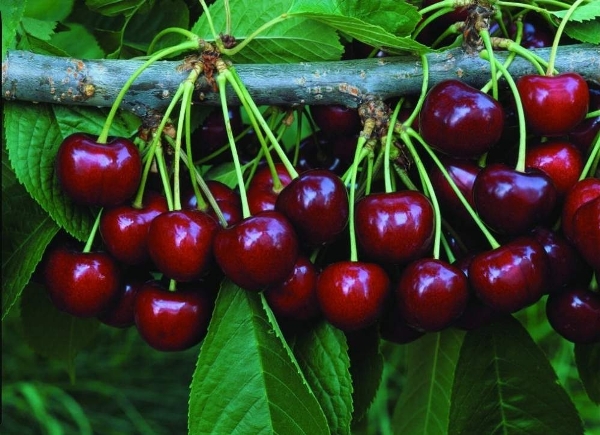Sweet cherry, as a woody plant, has been known since ancient times. Juicy and sweet fruit - a favorite treat for children and adults. Among the southern varieties of cherries, Valery Chkalov - a bright representative with relative resistance to frost. A description of this variety can be found below.
Table of contents
Description of the variety of sweet cherry Valery Chkalov
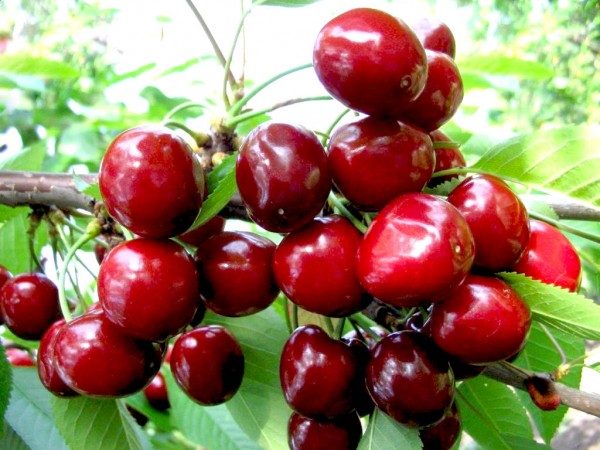
Cherry of an early ripe grade of maturing, is received in 1953 by MT breeders. Oratovsky and S.V. Zhukov.Breeding is derived from the joint work of the station Melitopol Experimental Gardening them. Mf Sidorenko and the Central Genetic Laboratory. I.V. Michurin. Pollinator - Caucasian Pink Cherry.
The variety grows in a temperate continental and subtropical climate. In the sharply continental and monsoon climate, the variety is not suitable for cultivation. Since 1974, the variety has been zoned in the North Caucasus:
- Rostov region;
- Stavropol region;
- Chechen Republic;
- The Republic of Ingushetia;
- Karachay-Cherkess Republic.
Brown curved shoots of sweet cherry reach up to 5 mm in cross section. Intensive growth of shoots is constrained by formative pruning.. In the annual seedlings leave the lower shoots, which further form the skeletal branches.
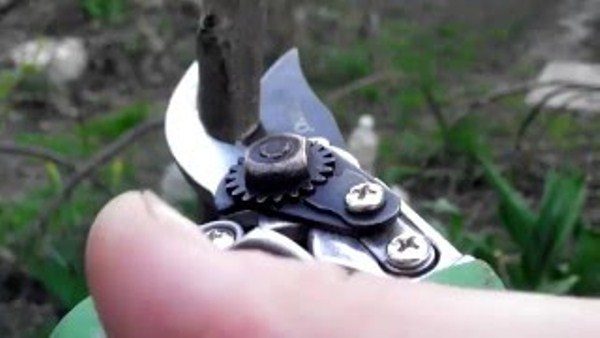
Winter hardiness and frost resistance of the variety, makes it possible, at sub-zero temperatures of up to 24 ° C, to lose up to 2/3 of the flower buds. This helps to preserve most of the crop. To a large extent, the yield of the variety has high rates. Indicators of a crop of a grade in the southern areas, within 10 years of fructification:
- Crimea: the average is 62 kg, the maximum level is 174 kg;
- Krasnodar region: average - 24 - 32 kg.
Fruit characteristics
Large burgundy-colored fruits are heart-shaped. Sweet and juicy flesh of a reddish shade, with a big bone. Fruit weight ranges from 7 to 9 grams. A small stem is attached to the fruit.

The content of substances in the fruit has the following composition:
- 13.5% dry matter;
- 0.6% free acid;
- 10.7% sugar;
- 0.21 mg - ascorbic acid.
The advantages and disadvantages of the variety
The advantages of the variety include the following qualities:
- early ripe variety;
- large fruits;
- juicy and tasty fruit pulp;
- high yield;
- suitability for canning;
- winter hardiness and cold resistance.
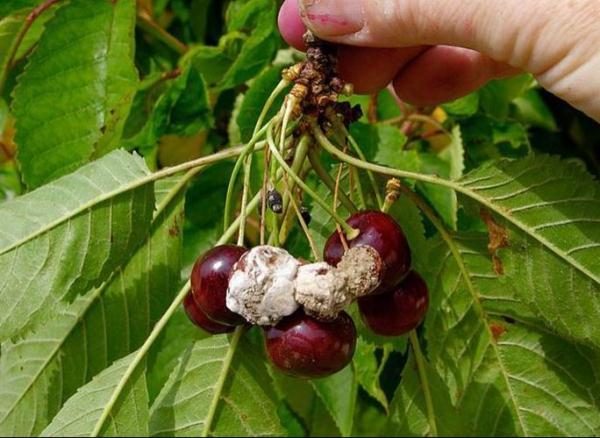
The disadvantages of the variety include only one property. - average resistance to fungal diseases.
Planting and care
For planting selected trees cherries with good performance.
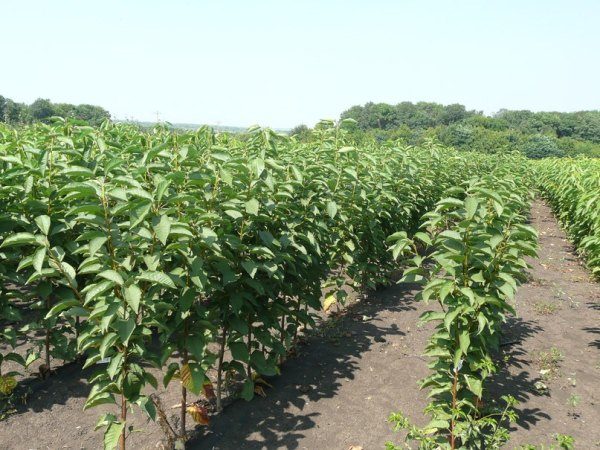
Seedlings should be with the following parameters:
- age - 1 - 2 years;
- stem diameter - 17 mm, and more;
- lack of wrinkled bark;
- the presence of 3 - 4 branches, up to 40 cm;
- difference in graft color and rootstock at the vaccination site;
- roots without damages and growths;
- no broken branches.
The time needed for planting cherries is the beginning of April, before the buds swell.. At this time, the seedling takes root faster due to the warm sunny period of the year. It is not recommended to plant sweet cherry in the autumn. A seedling so quickly will not be able to settle down before winter.
The landing site is protected from drafts. Choose the sunny side of the plot. Elevation needed or artificial elevation required for planting cherry. Trees pollinators varieties are planted next to, for good fruiting. The distance between the trees is left up to 4 meters, so that the trees can safely stretch the crown.
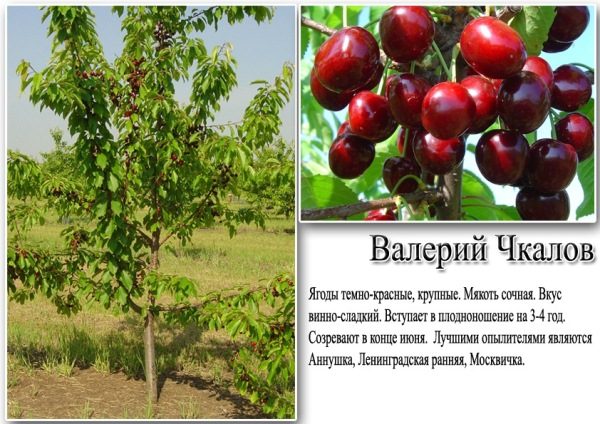
Pit for planting prepared in the fall. They dig up the ground and bring 2 buckets of humus mixed with fertile soil. The prepared soil for planting seedlings will continue to supply the necessary nutrition to the roots..
Spring planting of seedlings occurs with successive stages:
- Digging earth from a prepared pit, with a depth of up to 70 cm, with a diameter of 80 cm.
- Driven into the center of the pit peg, for support and stability of the seedling.
- Are brought to the bottom of the pit organic fertilizers in the form of compost or manure.
- Contribute:
- potassium sulfate - 100 grams;
- superphosphate - 300 grams;
- ash - 1 kg.
- Fill up fertilizer by land.
- Straightening roots gently load the seedling into the pit.

- Holding the tree fall asleep, taking into account the location of the root collar above the ground by 5 cm.
- For uniform watering create tree circle in depth by 5 cm. At the edges of the circle make the earth in the form of a shaft.
- Tie up sapling to the peg.
- Water the seedling water - 2 buckets.
- To mumble peat pristvolny circle.
Growing conditions
The saplings of the first 3 years regularly water and loosen the soil. At the same time the penetration of water into the depth is necessary at a distance of up to 40 cm, taking the roots.
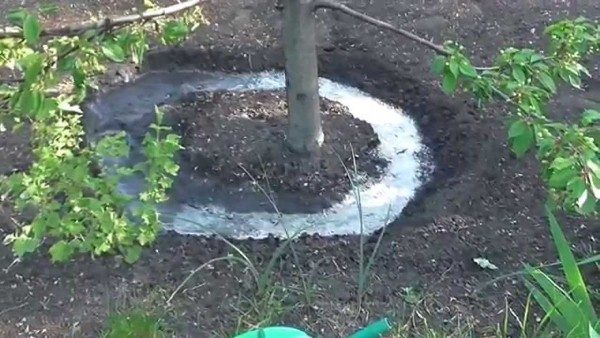
It is necessary to respect the schedule for watering cherries:
- before flowering;
- after flowering;
- before harvest for 3 weeks;
- in October.
Pruning annual seedlings is carried out in the spring, and provides for the following actions:
- shortening saplings at a height of 50 cm, with 4 - 5 developed kidneys;
- shortening the side shoots by 1/3;
- finding center line above the rest of the branches by 20 cm.
The formation of the crown of trees of the age of five stops, and pruning is subject to:
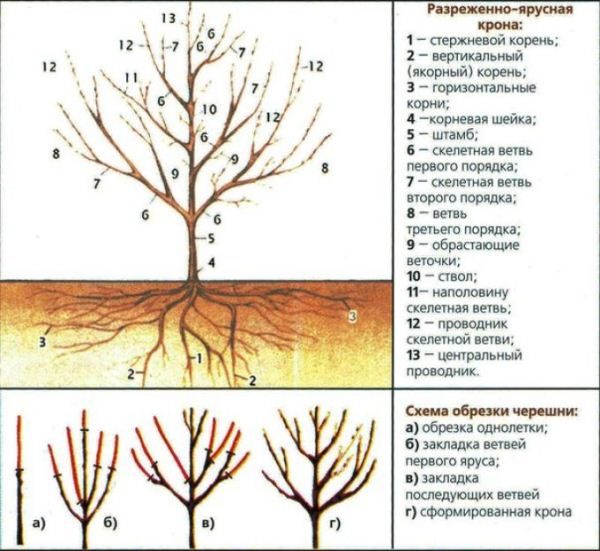
- tree height to the level of 3.5 meters;
- central branch and adjacent shoots to a level exceeding the nearest horizontal branches by 20 cm;
- strong shootswhich are directed inside the crown;
- tops vertically growing skeletal branches;
- side branches crowns.
Every year it is required to increase the near-stem circle to 1 cm. The area of the circle periodically update the mulch cover. Also do loosening and weeding. In the spring and early summer, nitrogen fertilizers are used that accelerate the growing season on trees. Fertilizers with phosphorus and potassium are applied in autumn. The following fertilizers are required:
- dry urea - 120 g;
- urea solution - 30 grams per 1 bucket of water: May - June - 3 times, followed by loosening and watering.
Four-year trees increase the circular furrow to 40 cm. This is due to an increase in the number of roots.
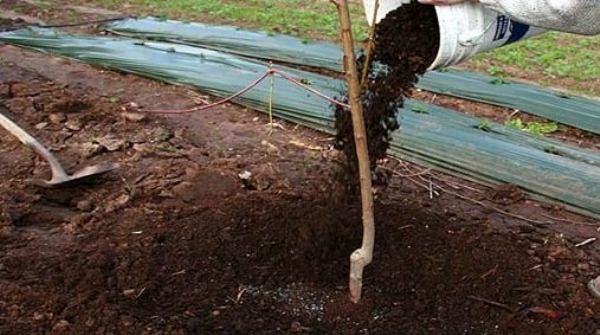
At this age, trees need fertilization:
- early spring add dry urea - 150 grams and pour;
- in the autumn make potassium sulphate - 100 grams, granulated superphosphate - 300 grams.
Trees of the fifth year of life are fed:
- in the spring –On 1 bucket of water - 30 grams of ammofoski; urea - 200 grams - in the furrow;
- in the autumn - on 1 tree - 20 kg of humus.
Preparation of sweet cherries for the winter period consists in whitewashing trees. This will protect the trees from pests and diseases.
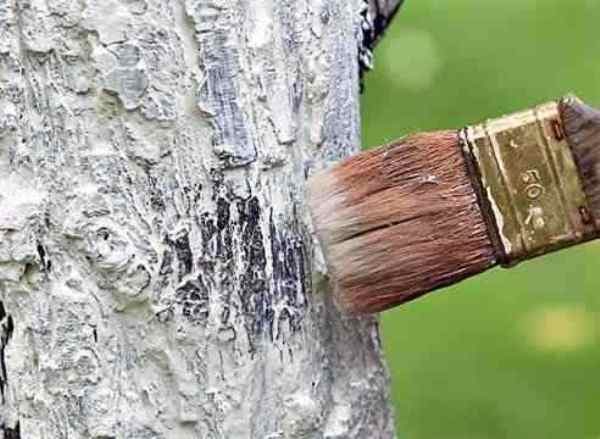
This event is carried out with the dilution of the composition for whitewashing, in 2 options to choose from:
- PVA glue - 2 tbsp. spoons, lime - 300 grams;
- water - 2 liters, milk - 100 grams, bluestone and dust - 1 tbsp. a spoon.
Be sure to cover the trees with fir-wood for the winter. Wrap the trunk and skeletal branches with burlap. Renew pristvolny circle with fresh peat. Crop varieties with proper and constant care get after planting seedlings in five years, and then annually. Fruiting occurs in early June. The average harvest of trees 10 - 15 years is 62 kg.
Features grade
- Variety - a source of multivitamin complex, containing flavonoids, carotene, pectins, sugar, is also enriched with micro and macro elements.
- Sweet cherry is an excellent remedy for spring avitaminosis. Traditional medicine uses cherry as a diuretic for the treatment of kidney disease.Tone the body, helping to reduce weight and improve the condition of the body.
- Thanks to berries of sweet cherry, walls of capillaries become stronger, helping with hypertensive diseases. Due to the content of coumarin in the cherry, the limit of blood clotting is reduced. It helps in the treatment of anemia and the formation of blood clots and plaques.
- The weakened motility of the stomach is able to restore the juice of sweet cherry. It stimulates the digestive process, and helps with stomach pain syndrome. It also acts as a regulator, reducing cholesterol levels in the blood.
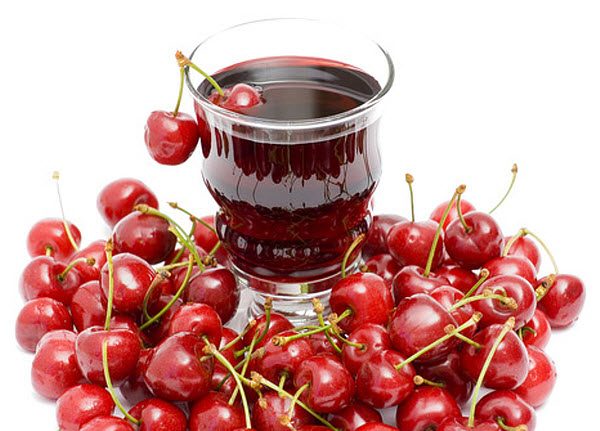
- Varieties of peppers help regulate cardiac activity. Favorably affect the body during stimulation and neurosis.
Diseases and pests
The attractiveness of sweet cherries is so great that it attracts people and various ailments with its fruits. Planting seedlings always requires special care for them. However, the care of cherries can not fully guarantee the protection of trees from all evils. In order to avoid the main diseases and pests with which the sweet cherry is found, the necessary information from the tables will help in combating them.
| Disease name | Infection period | Manifestation of the disease | Methods of struggle |
|---|---|---|---|
| Coccomycosis | Mid July - end of August | The appearance of leaves on the spots. Scattering of leaves. | Spraying: 2 ml of "Scor" on a bucket of water; 3 g of "Horus" in a bucket of water (during the summer period); |
| Monilioz (fruit rot) | All summer, mostly during flowering. | It manifests itself mainly affected by bright spots and begin to rot. | 2 ml of "Topaz" in a bucket of water; 3 g of "Horus" on a bucket of water. |
| Klesterosporiosis (perforated spotting) | All summer | The appearance of spots on the leaves, turning into holes. | 25 g of "Ridomila" in a bucket of water. Processing of sites of vitriol. |
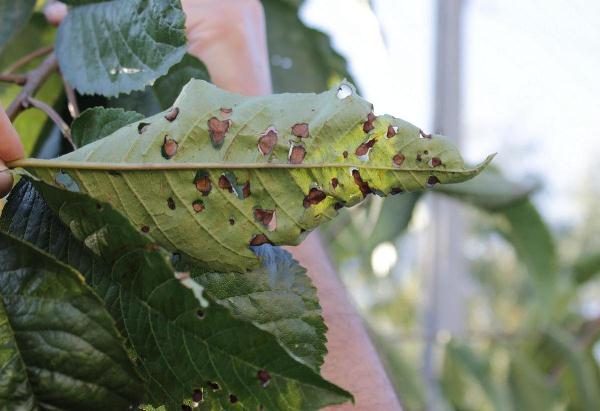
| Pest name | Period of appearance | Pest manifestation | Methods of struggle |
|---|---|---|---|
| Cherry fly | May to June | Small worms on the berries. | 10 ml of "Fufanon" on a bucket of water; 2.5 ml of "Kinmiks" on a bucket of water. |
| Cherry weevil | May to June | The appearance of bugs on flowers. | 8 g of "Aktara" in a bucket of water; 50 ml of "Lepidocide" in a bucket of water. Burning damaged leaflets. |
| Cherry shoots moth | In May | Appearance on flowers. | 1.5 g of "Confidor" in a bucket of water. |
| Cherry aphid | May to July | Finding aphids on leaves and stalks. | 10 ml of "Fufanon" on a bucket of water; Application: 200 g of ground garlic hold for 20 minutes, enter the water. |
The beautiful variety is rightly successful with most fruit tree lovers due to its amazing qualities.. Proper care of the cherries will give the most delicious rewards to the delicious fruits of all lovers of the variety.
